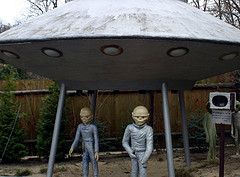
Several weeks ago at the Association of Arts Administration Educators’ Conference in California, I had the pleasure of attending a plenary session/performance by Luis Alfaro. He is a “renowned . . . performance artist, writer, theater director, and social activist;” a MacArthur Fellow–a truly brilliant one. But one story he told had a brief phrase that gave me mental whiplash. He was talking about an encounter at a box office he had had and commented that the box office is the first connection that arts organizations have with the community. He went by it so quickly and the truth of what he said is so “understood” that I almost missed it. However, seeing that I am focusing on the observation as an Engaging Matters post, can you guess where I’m going?
When I caught myself thinking about his statement, I realized that if a purchase at the box office is, indeed, the first point of contact with the community, from an engagement perspective, it is *way* too late. The programming has been set, the marketing has been done, there has been no conversation with community members about how the work being presented is relevant (or could be made so) to them. It is business as usual (or at least usual as of 10-20 years ago) in the arts establishment.
What was particularly telling to me is that it was a thought I’ve not thought before, at least not directly. The assumption that the box office is the first place the arts and the public intersect is pretty deeply ingrained in the performing arts world. Maybe it’s simply helpful to have an internal bell that goes off reminding us that the box office is too late a point for first contact if we are serious about engagement.
Even if you or your organization has no interest in opening up discussions about artistic content, once the content is set it is perfectly reasonable to communicate with your community about that content and explore points of relevance–before anyone even thinks about a trip to the physical or virtual box office. This demonstrates your interest in/concern for the community, it will help with marketing, and it might just inform (positively) some aspect of the work itself.
I would, of course, go further and argue that relationship building that precedes content selection can be advantageous for all, including the quality of the art. But this is a blog post, not a dissertation. We’ll come back around to that again later.
In the meantime, when next you think about the box office, imagine that it is the location in which your organization is meeting with old friends rather than a point of first contact or even of repeat contact with a stranger. How do you get there? And what does it mean for your work? (And for your bottom line!) It will require for many some new thinking and new behavior. But it will yield positive results.
Engage!
Doug
Photo![]()
![]()
![]() Some rights reserved by pixelroiber
Some rights reserved by pixelroiber

How can this be true? For someone to get to the box office there has to have been a relationship established, via a press story, or a review, or a recommendation by a friend, by past engagement with the organization, an email the organization sent, etc. etc. The communication may (or may not) have been one way but the customer was engaged enough to buy the ticket. If the larger point is how can the box office experience be enhanced, then I think there is much that can/should be done, always understanding that if you’ve got a line going, trying to engage the customer in a dialogue at the actual point of purchase seems foolhardy. However, having someone surveying customers, or asking for their emails or somehow engaging them while they are waiting seems pretty essential to building relationships.
I think we have a fundamental disconnect about the meaning of engagement. For me, to be meaningful, engagement must be a process that develops a two-way relationship. By and large what you describe is one-way (see: http://www.artsjournal.com/engage/2012/04/one-way/). The organization does not know anything significant about the person in the modes you cite. There is no reciprocal relationship created through a “press story, or a review, or a recommendation by a friend, by past engagement with the organization, an email the organization sent.” The “customer” may in some way have been engaged with the organization, but the organization is not engaged with the customer. And the interests of that person certainly are not having any influence on the programming or the contextualizing (making up words is fun) of that programming.
Burton, Hi 🙂
It has been my experience that I can many times learn more from reading the comment section than the article. I see that you begin with, “How can this be true?”. Well, no offense but I don’t have to read any further because the fact is , Everything is true! If not here then somewhere because when you say it, type it, even think it, YOU Create it. So what you are creating right off the bat is doubt and that Sir will most certainly not launch your boat 🙂
Love and Light,
Fletcher